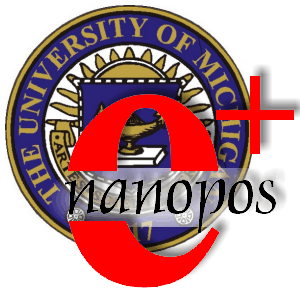

 |

|
| Home | PALS Tutorial | Porous Low-k Dielectrics Thin Films | Publications | Service and Contact | |
|
Nanoporous materials have attracted tremendous interest due to their many potential applications, including but not limited to low-dielectric constant (low-k) thin films in microelectronic industry, membranes and selective permeation filters in biotechnology, and catalysts in chemical engineering. The emerging field of engineered nanoporosity (controlling pores from several angstroms to tens of nanometers ) require vast improvements in pore characterization techniques, as there are few probes capable of characterizing such porosity, especially in thin films and especially when the pores are closed and inaccessible to gas absorption techniques. Positronium annihilation lifetime spectroscopy (PALS) has proven to be a very powerful technique capable of probing unoccupied nanoscale volumes (both open and closed), such as nanovoids, nanopores, or defects in a wide dimension range (0.3 nm to 30 nm). Beam-based PALS has a particularly advantage capable of depth-profiling very thin films (from several nanometers to microns thick). As a specific example of the broadly applicable beam-PALS technique, we focus herein on the extensive investigation of nanoporous low-k thin films to demonstrate PALS capability in exploring pore characteristics on nanoscale. Cu/porous low-k integration issues, such as metal diffusion, diffusion barrier integrity and the compatibility of low-k films to integration processes. The methodology developed is perfectly general for applications to varieties of nanoporous materials. For a better understanding of the PALS, a tutorial section is provided. Details about the PALS technique and the methodologies of using beam-PALS to explore nanoporous thin films are described in related publications. Sample services and contact information are included. We appreciate major financial support from National Science Foundation, International Sematech and Institute of Materials Research and Engineering (IMRE) in Singapore.
|
|